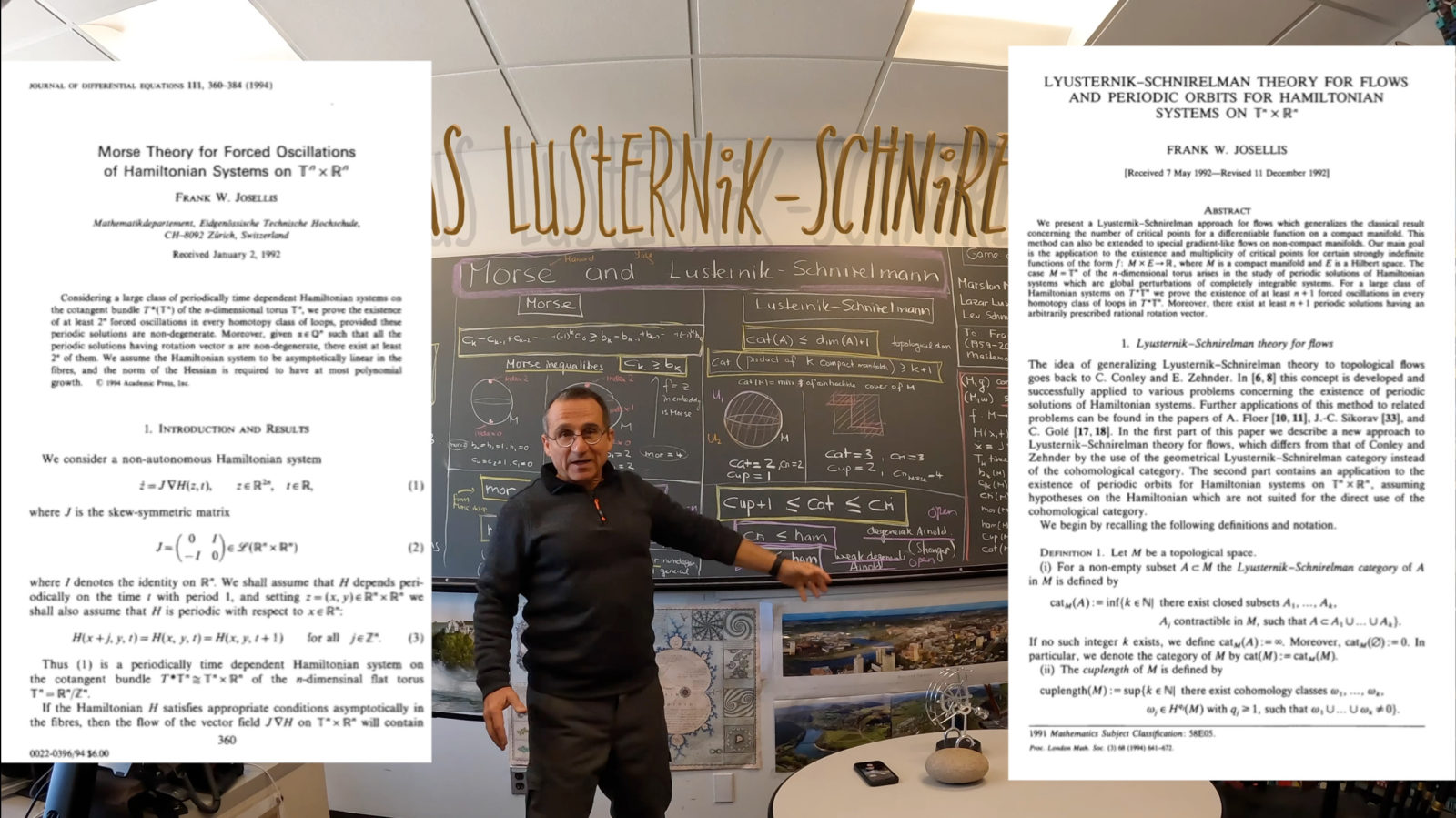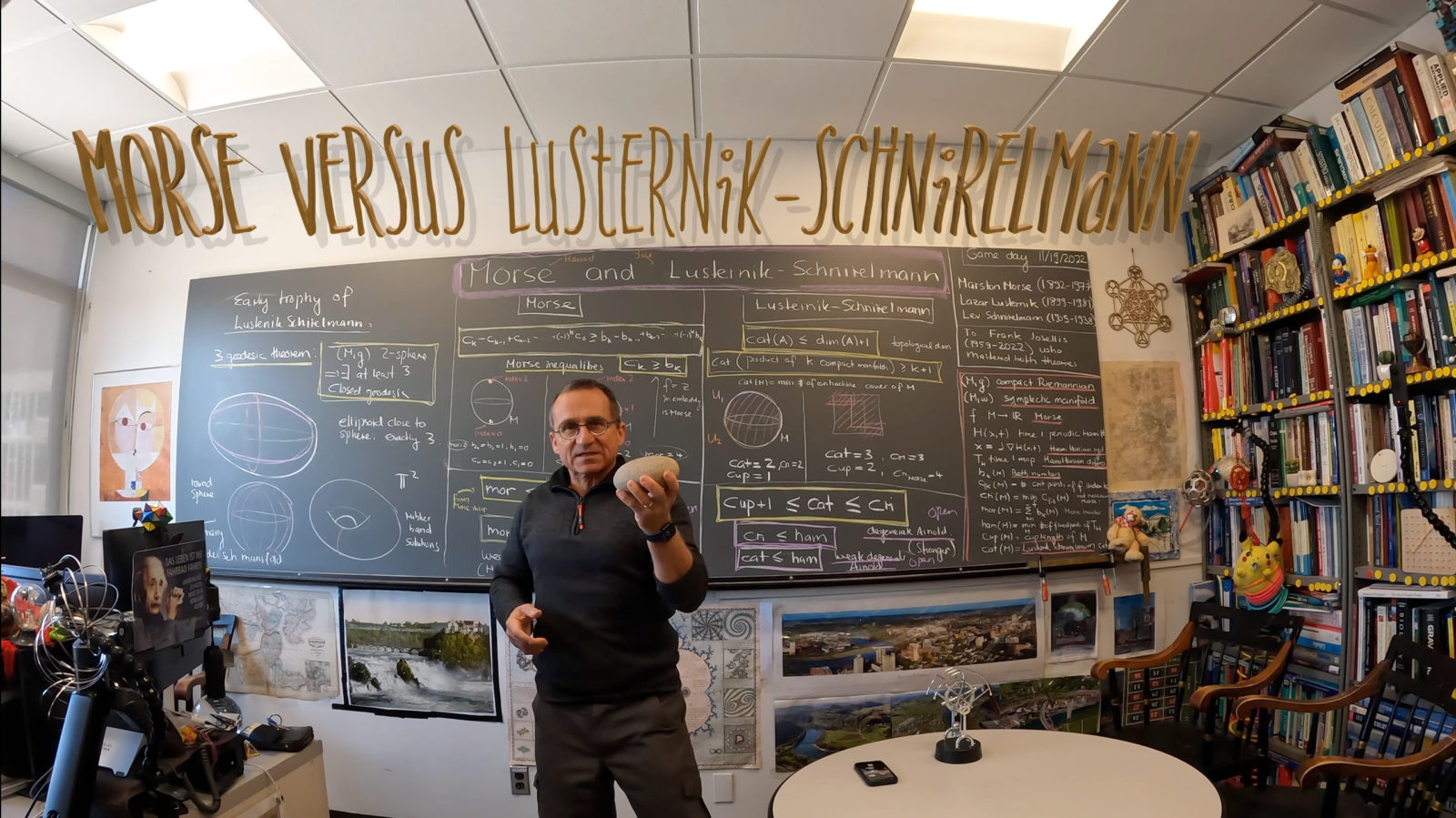Functionals
If M is a manifold, we can look at the minimal number of critical points a function can have, the category
the minimal number of contractible sets covering M, the Betti numbers
, the Morse number
, the cup length
, the minimal number of harmonic forms of positive degree whose cup product is non-zero, the minimal number
of critical points of Morse index $k$ a Morse function can have on M and
the minimal number of critical points a Morse function can have on M.
Morse theory
Morse theory is an elegant approach to calculus. It cuts through the difficulty by cutting away all the subtleties which can come in degenerate situations. Morse functions are twice differentiable functions for which the Hessian at every critical point is non-degenerate. The strong Morse inequalities imply in particular . By constructing a single Morse function on a suitable realization of the manifold one can get bounds on the Betti numbers. In particular one has
. The minimal number of critical points of a Morse function has a lower bound in terms of cohomology.
Arnold conjecture in Morse case
If M is a Hamiltonian manifold and T a symplectic map which is the time one map of a 1-periodic Hamiltonian system (an elegant way to say that T is homotopic to the identity), then Vladimir Arnold conjectured that , the minimal number of fixed points which such a map
can have, satisfies
. This is the famous strong Arnold conjecture. The weak Arnold conjecture
has been proven by Floer under some mild condition and an army of mathematicians have improved on this since. The strong conjecture is still open.
Lusternik-Schnirelmann theory
The Lusternik Schnirelman (*)category is bound above by dim(M)+1 and bound above by k+1 if M is a product of k compact manifolds. In particular, for a k-torus, it is k+1. The interest in category comes from the inequality . Like for the Morse theoretical inequality
it relates a homotopy invariant with an calculus notion. Unlike in Morse theory however, now cri(M) counts any critical points. (* Lusternik is sometimes written Ljusternik or Lyusternik).
Arnold conjecture in Lusternik-Schirelmann case
When allowing more general functions than Morse functions, critical points can be more complicated. There can be less. On a 2-torus for example, we have but
. The degenerate Arnold conjecture is
. Also here there is a weak version
. But since
, the weak version is super seeded by the weak Morse version.
Frank Josellis (1959-2022)
Frank Josellis who passed away a month ago was a master of both theories. In his thesis (completed 1991, just at the time, when Floer died, he proved a theorem using both techniques: a Morse approach as well as a Lusternik-Schnirelmann approach. The developments have shown since that Morse theory turned out to be a more powerful theory. It is not excluded however that the strong Arnold conjecture is wrong and that one has to retrench to the degenerate Arnold conjecture .
Discrete notions
I had worked with Frank about discrete notions of Lusternik-Schnirelmann category. It is no surprise that the story is exactly the same. I mused recently about how to do symplectic geometry on a finite simple graph and the question how to define symplectic maps in the discrete. It appears that one has to use more quantum mechanical notions and look at solutions to wave type equations . One still can look at a non-degenerate 2-form w and look at an inner derivative
by using
as the definition. Cartan’s formula then gives
and the wave equation
can be solved explicitely by
. This is completely analog as the usual wave equation
can be solved by
with $D=(d+d^*)$ being the Dirac operator. One of the difficulties is that
is not selfadjoint (unlike the Dirac case) and that so the evolution is not unitary. But this is not a surprise since symplectic maps are not necessarily orthogonal neither. In two dimensions, a symplctic map is just area preserving. I had wondered in that talk whether there would be an analoguous statement about the minimal number of periodic solutions which the wave equation defined by a time dependent Hamiltonian can produce. The time 1-maps would be the analogue of symplectic maps.































